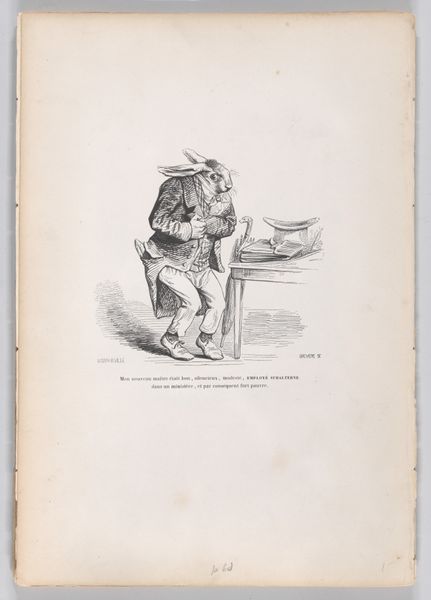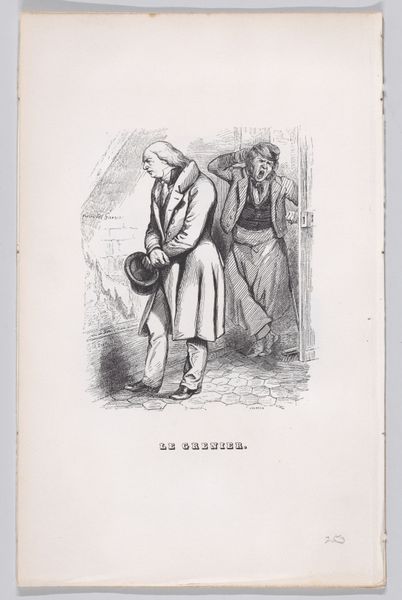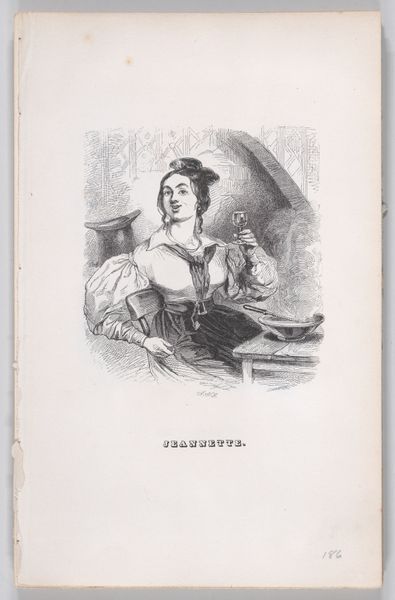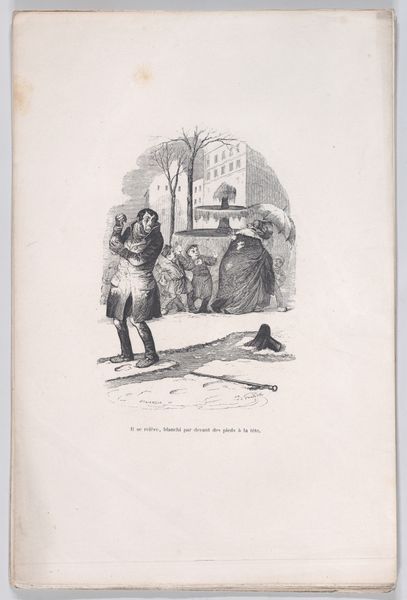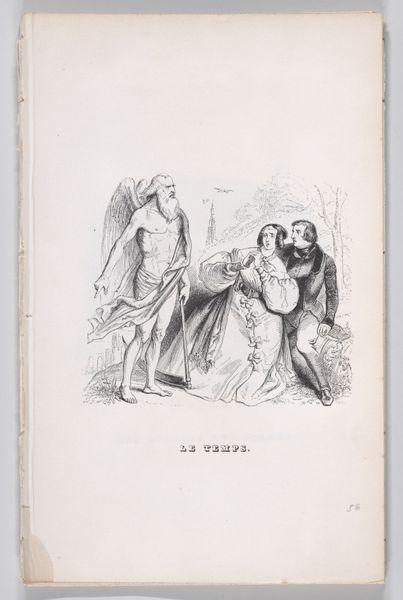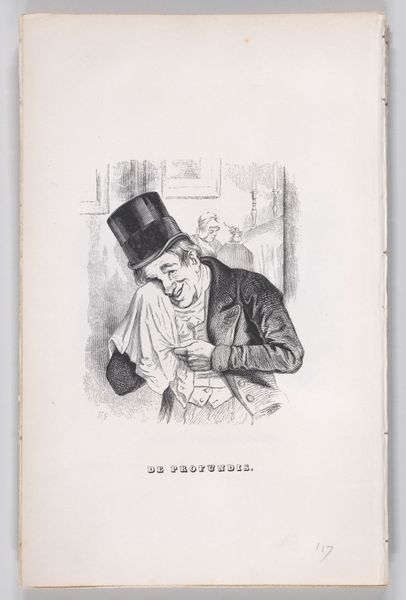
"The Potbellied Man" from The Complete Works of Béranger 1836
0:00
0:00
drawing, lithograph, print, etching, pencil
#
portrait
#
drawing
#
lithograph
# print
#
etching
#
caricature
#
pencil sketch
#
romanticism
#
pencil
#
genre-painting
Dimensions: Sheet: 8 5/8 × 5 1/2 in. (21.9 × 14 cm)
Copyright: Public Domain
This lithograph was created by J.J. Grandville for "The Complete Works of Béranger." The central figure, identified as "Le Ventru," or "The Potbellied Man," offers a striking image of corpulence and self-satisfaction. Note how the man’s gesture of holding his stomach is evocative of Bacchus, the Roman god of wine and revelry, often depicted with a similarly rounded belly. This gesture, deeply rooted in classical antiquity, signifies indulgence and excess. Yet, here, the context shifts: Bacchus was associated with ecstatic liberation, whereas "Le Ventru" appears in a setting of bureaucratic indifference. The motif of the potbelly has echoed through history, from Renaissance paintings depicting allegories of gluttony to modern-day political cartoons satirizing corruption. Its persistence is a testament to the enduring human fascination—and critique—of excess. The image engages us through our own complex relationship with desire and self-control. This engagement isn't merely intellectual; it's a visceral, subconscious recognition of our shared human condition. "Le Ventru" embodies a timeless commentary on power, pleasure, and the perils of unchecked appetite, continuously resurfacing in our collective consciousness.
Comments
No comments
Be the first to comment and join the conversation on the ultimate creative platform.

